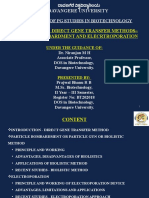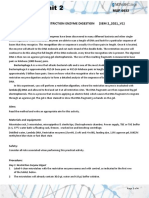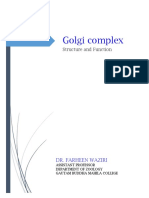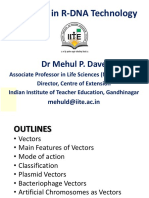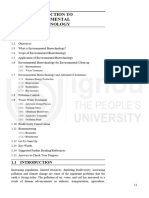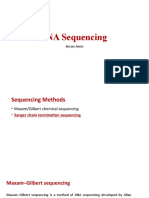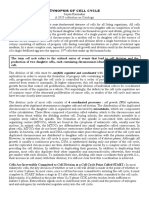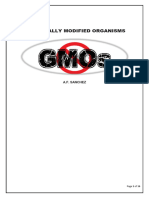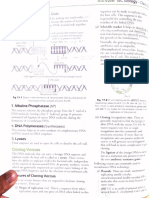0% found this document useful (0 votes)
165 views28 pagesGene Transfer Methods
Gene transfer methods can be direct or indirect. Indirect methods include Agrobacterium-mediated transfer using Ti plasmid and vir genes. Direct methods are biolistic/particle bombardment, microinjection, liposome/PEG-mediated transfer, and electroporation. These introduce exogenous DNA into cells and organisms. Natural methods are conjugation, transformation, and transduction using bacteriophages. Gene transfer has applications in generating transgenic plants and animals with desired traits.
Uploaded by
ayeshasattarsandhuCopyright
© © All Rights Reserved
We take content rights seriously. If you suspect this is your content, claim it here.
Available Formats
Download as PPTX, PDF, TXT or read online on Scribd
0% found this document useful (0 votes)
165 views28 pagesGene Transfer Methods
Gene transfer methods can be direct or indirect. Indirect methods include Agrobacterium-mediated transfer using Ti plasmid and vir genes. Direct methods are biolistic/particle bombardment, microinjection, liposome/PEG-mediated transfer, and electroporation. These introduce exogenous DNA into cells and organisms. Natural methods are conjugation, transformation, and transduction using bacteriophages. Gene transfer has applications in generating transgenic plants and animals with desired traits.
Uploaded by
ayeshasattarsandhuCopyright
© © All Rights Reserved
We take content rights seriously. If you suspect this is your content, claim it here.
Available Formats
Download as PPTX, PDF, TXT or read online on Scribd
/ 28





